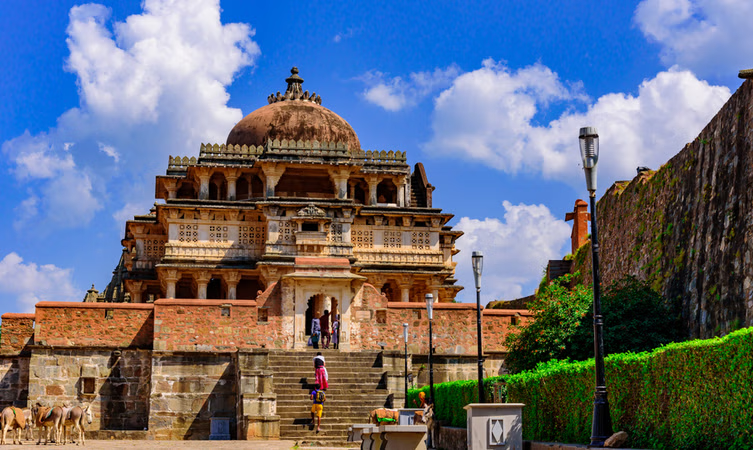The Vedi Temple, located within the majestic Kumbhalgarh Fort complex in Rajasthan, India, is a striking example of ancient Hindu temple architecture with historical and cultural significance. Built during the reign of Maharana Fateh Singh in the late 19th century, this temple was primarily constructed as a place for performing religious rituals and ceremonies, particularly yagnas (sacrificial fire rituals).
Architecturally, the Vedi Temple is a unique octagonal structure built on a high raised platform, supported by 36 intricately carved pillars. These pillars and the overall design reflect the traditional Mewar architectural style, featuring ornate carvings, symmetrical design, and a strong sense of proportion. The temple is also adorned with delicate lattice work and finely sculpted motifs that showcase the craftsmanship of the period.
The elevated platform on which the temple stands gives it a distinctive prominence within the fort complex. It is said that the location was carefully chosen to provide a spiritual and visual focal point for the surrounding area. The temple consists of a sanctum and a pillared mandapa (hall), which would have been used for performing religious rites and accommodating priests and devotees.
One of the temple’s key historical roles was as a venue for royal rituals and offerings to appease the deities and seek blessings for the kingdom. It was particularly used during significant festivals and times of royal decision-making. Though relatively modest in size compared to other temples in the region, the Vedi Temple’s historical context and architectural elegance make it a notable monument.
Situated inside the Kumbhalgarh Fort — a UNESCO World Heritage Site and one of the largest forts in India — the Vedi Temple is part of a larger complex that includes over 300 ancient Jain and Hindu temples. The fort itself was built by Rana Kumbha in the 15th century and is known for its massive walls, second only to the Great Wall of China in length.
Today, the Vedi Temple is a popular stop for visitors exploring Kumbhalgarh. It offers not only a glimpse into the religious life of the Mewar rulers but also panoramic views of the surrounding Aravalli hills, making it both a spiritual and aesthetic experience.
